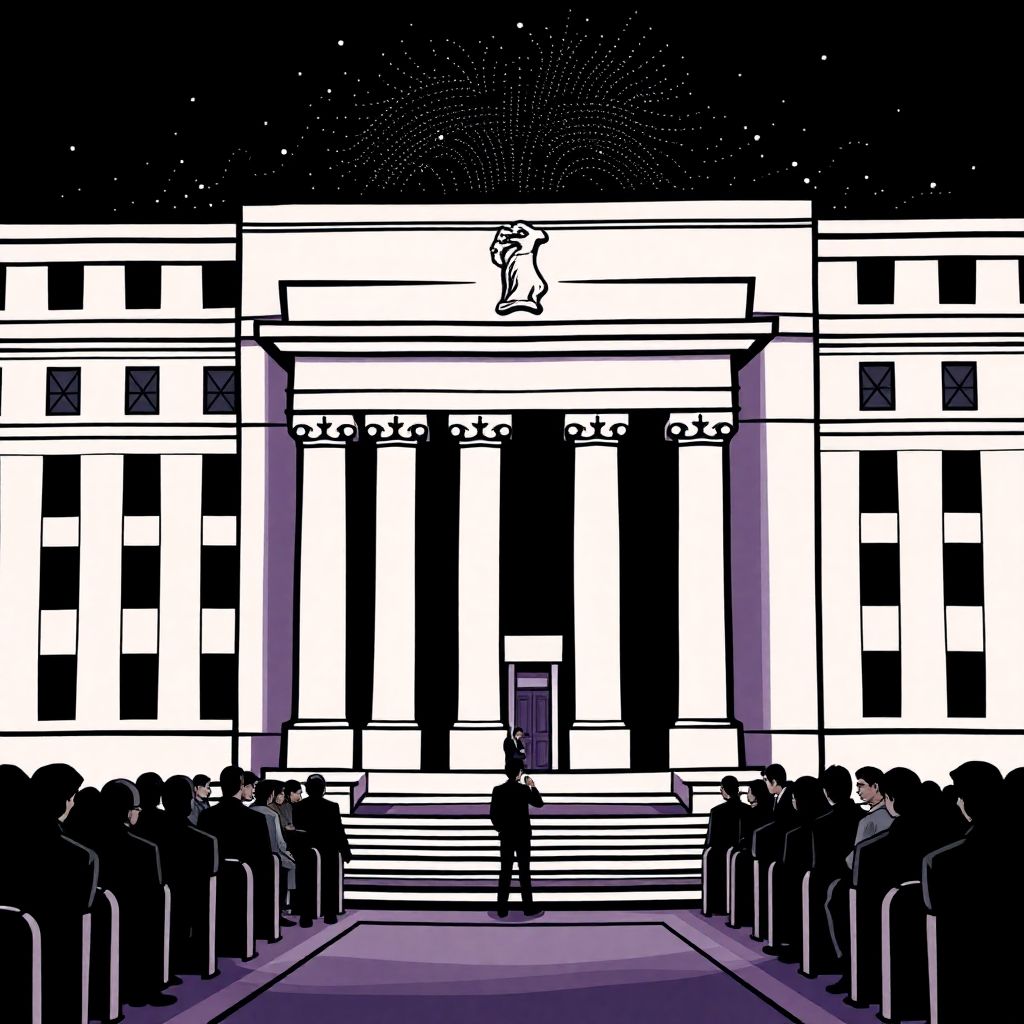On October 21, the U.S. Federal Reserve will convene a landmark event titled the “Payments Innovation Conference,” signaling a significant shift in institutional engagement with the digital asset space. Held in Washington D.C., the conference aims to foster direct dialogue between central bank officials and thought leaders in cryptocurrency, decentralized finance (DeFi), and fintech. With a focus on innovation, the event will explore the future of digital payments, bridging traditional financial systems with emerging blockchain technologies.
Governor Christopher J. Waller will open the event, setting the tone for a day of in-depth discussions on topics such as stablecoins, tokenized assets, artificial intelligence, and the broader crypto payments ecosystem. The conference will be broadcast live via the Fed’s official website and YouTube channel, reflecting the institution’s intention to increase transparency and engage with a wider audience.
This forum represents one of the most direct efforts by the Federal Reserve to understand and potentially influence the trajectory of digital currency and blockchain-based financial infrastructure. In its official statement, the Fed emphasized its openness to “a broad range of perspectives” in order to enhance and modernize the U.S. payment system. By inviting key players from both legacy finance and the crypto world, the Fed signals a willingness to adapt to the rapidly evolving financial environment.
The conference’s agenda includes four major panel discussions, each designed to drill into specific aspects of crypto and digital finance. The first panel, starting at 9:20 AM local time, will explore how traditional finance can be integrated with decentralized digital assets. Moderated by Rebecca Rettig, Chief Legal Officer at Jito Labs, the session will feature speakers such as Sergey Nazarov, CEO of Chainlink; Jackie Reses, CEO of Lead Bank; Michael Shaulov, CEO of Fireblocks; and Jennifer Barker from BNY Mellon.
The second panel will delve into stablecoins, focusing on their use cases, adoption models, and regulatory implications. Moderated by Kyle Samani, Co-Founder of Multicoin Capital, participants include Heath Tarbert, President of Circle (issuer of USDC); Fernando Terres, CEO of Dolar App; Tim Spence, CEO of Fifth Third Bank; and Charles Cascarilla, CEO and Co-Founder of Paxos.
Artificial intelligence’s role in the evolving payments landscape will be the core theme of the third panel, moderated by Matt Marcus of Modern Treasury. High-profile participants include Cathie Wood, CEO of Ark Invest; Alesia Haas, CFO of Coinbase; Emily Sands, Head of AI at Stripe; and James Tromans, Managing Director of Web3 and Digital Assets at Google Cloud. This session is expected to cover how AI can optimize transaction processing, fraud detection, and user experience in digital finance.
The final panel discussion will address tokenized products, a rapidly growing segment of crypto finance. Colleen Sullivan, Co-Head of Ventures at Brevan Howard, will moderate a conversation featuring Jenny Johnson, CEO of Franklin Templeton; Don Wilson, Founder and CEO of DRW Trading Group; Rob Goldstein, COO of BlackRock; and Kara Kennedy, Co-Head of JPM Kinexys. This discussion will likely explore the institutional adoption of tokenized assets and the infrastructure needed for scalability and compliance.
Governor Waller will deliver closing remarks, likely summarizing the key takeaways and hinting at possible next steps in the Fed’s approach to digital asset regulation and innovation.
The implications of this event extend far beyond the conference room. With the crypto market highly sensitive to regulatory signals, the discussions and statements made during the event could influence market sentiment, impact investment strategies, and shape the pace of institutional adoption. For example, if the Fed shows openness toward stablecoins or tokenized financial instruments, it could help legitimize these technologies in the eyes of traditional financial institutions and spur further development.
Moreover, the inclusion of AI in the discussion reflects a broader trend toward convergence between machine learning and financial technology. As AI tools become more robust, their integration into payment systems could drive substantial improvements in security, efficiency, and user personalization.
This conference also comes at a time when global regulatory frameworks for crypto are rapidly evolving. While Europe has already advanced with its Markets in Crypto-Assets (MiCA) regulation, the U.S. has lagged behind. By hosting this event, the Fed may be signaling its intention to catch up and even lead in setting standards for digital assets and payments.
Another notable aspect of the event is the diversity of attendees. From tech giants like Google and Stripe to crypto-native firms like Chainlink and Paxos, the broad representation underscores the interconnected nature of today’s financial ecosystem. This diversity could lead to more holistic discussions and better-informed policy frameworks.
Institutional interest in digital assets continues to grow, with major asset managers like BlackRock and Franklin Templeton exploring blockchain-based investment vehicles. The presence of their executives at the conference may hint at a future where tokenized funds and securities become increasingly mainstream.
Furthermore, the topic of crypto custody and infrastructure is likely to be discussed, even if indirectly. With the U.S. government reportedly holding over 300,000 bitcoins, secure and compliant custody solutions have never been more critical. Federal Reserve engagement on these issues could support the development of standardized custody frameworks, making it easier for institutional players to enter the space.
In summary, the Payments Innovation Conference represents a pivotal moment in the Fed’s relationship with digital assets. It could lay the groundwork for future regulation, signal increased institutional acceptance, and influence the direction of both innovation and compliance in the crypto space. For investors, entrepreneurs, and regulators alike, the outcomes of this conference will be closely watched—and may shape the trajectory of digital finance in the United States for years to come.

